Vintage Kitchen Cupboard Restoration
Today we are restoring a vintage kitchen cupboard that most people would toss in the dumpster! Not us, though! We love a challenge!
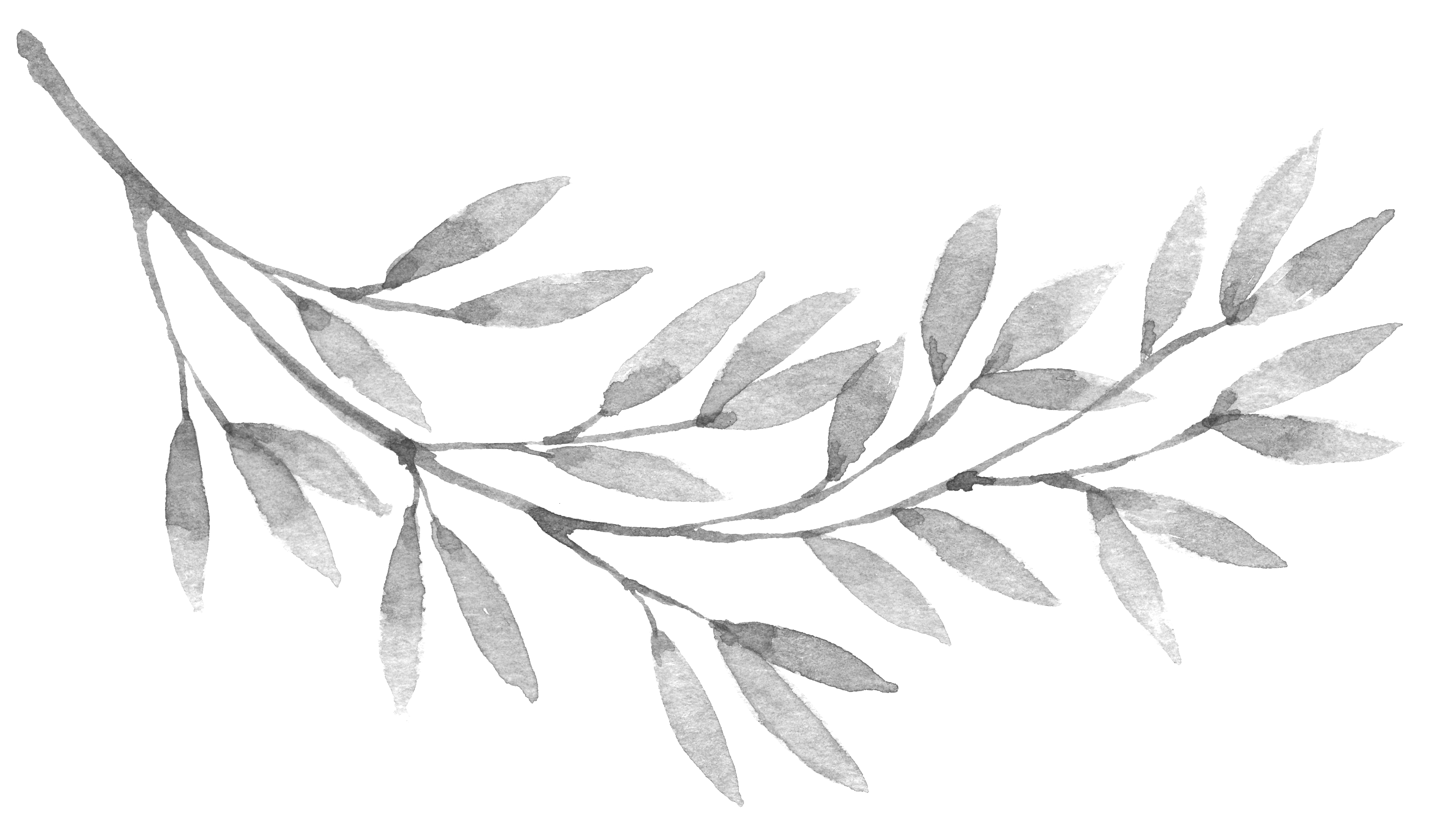
up for the challenge!
Call me crazy. Go ahead. You won’t be the first!
We had a client call us to ask if we do custom work on anything. Of course, I said, “Sure we do! Send me a pic!”
We agreed we could give this kitchen cupboard some love.
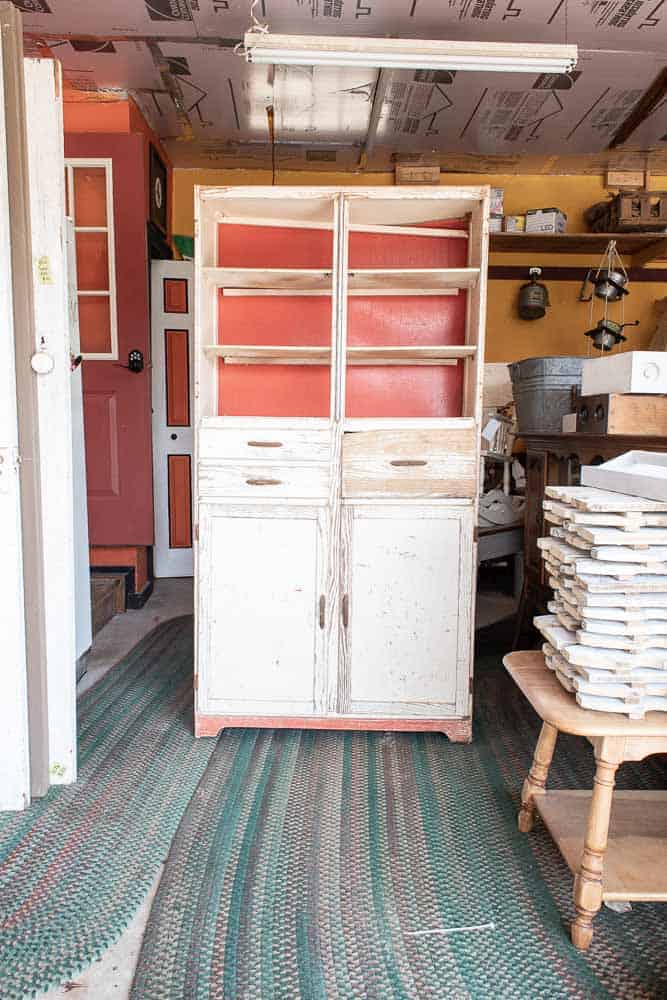
She and her hubby brought it over a couple of days later. I told her we would get to it as soon as we came back from summer vacation.
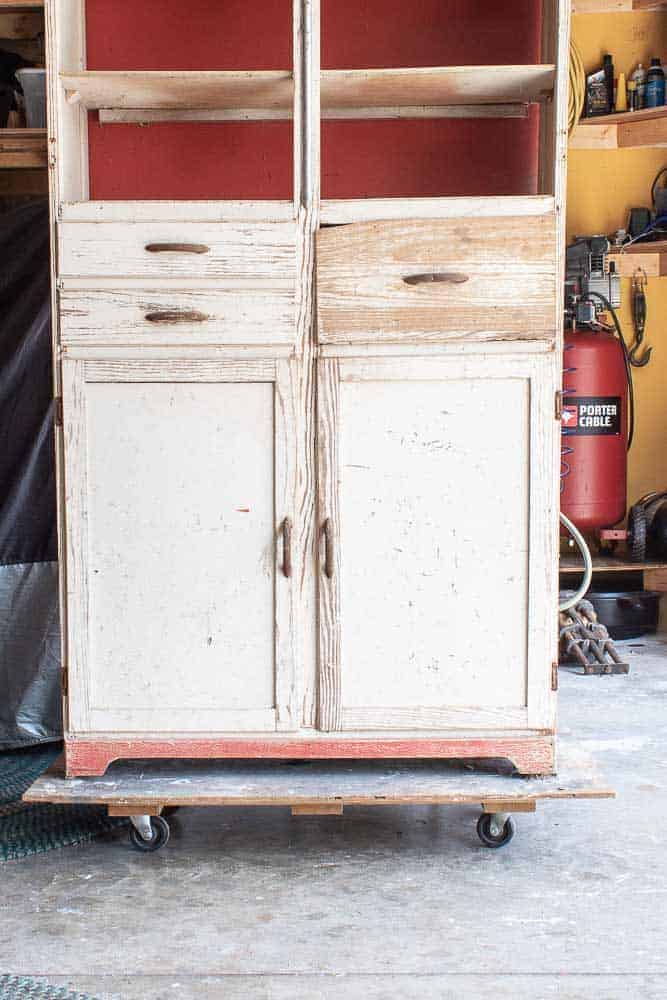
dirt and grime – yuck!
Wow. What did we get ourselves into!!
This vintage kitchen cupboard was her grandmother’s. She remembers it as a child in her grandmother’s home. So when she remembered that it was tucked away in a barn, she thought about having it restored.
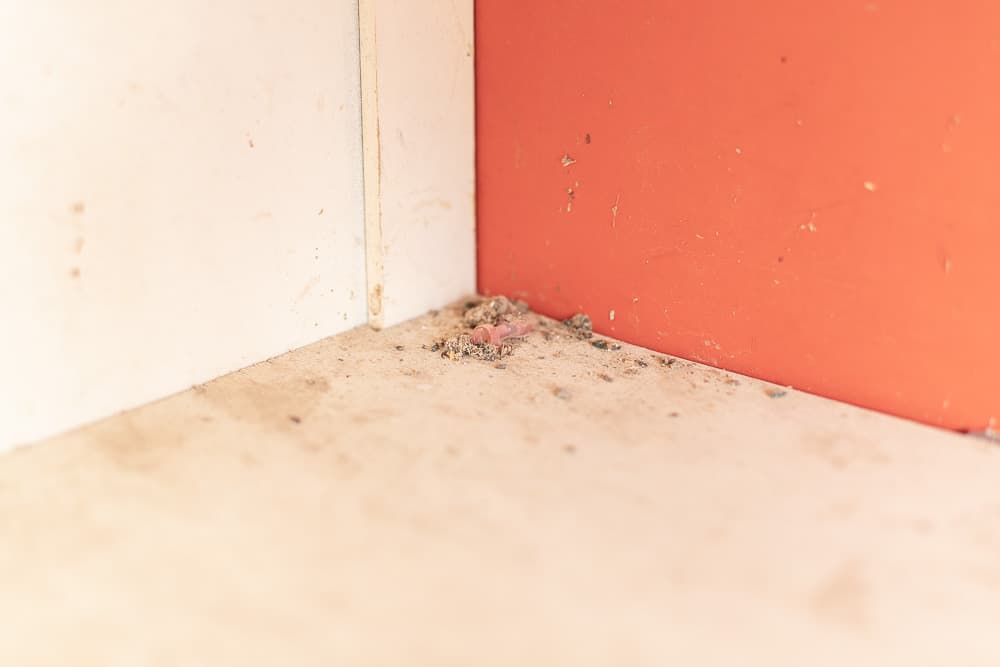
I know what you must be thinking:
Yuck!! Look at those warped shelves! And those corners filled with who knows what! And omgoodness, that hardware is so rusted!
Are you crazy Cindy????
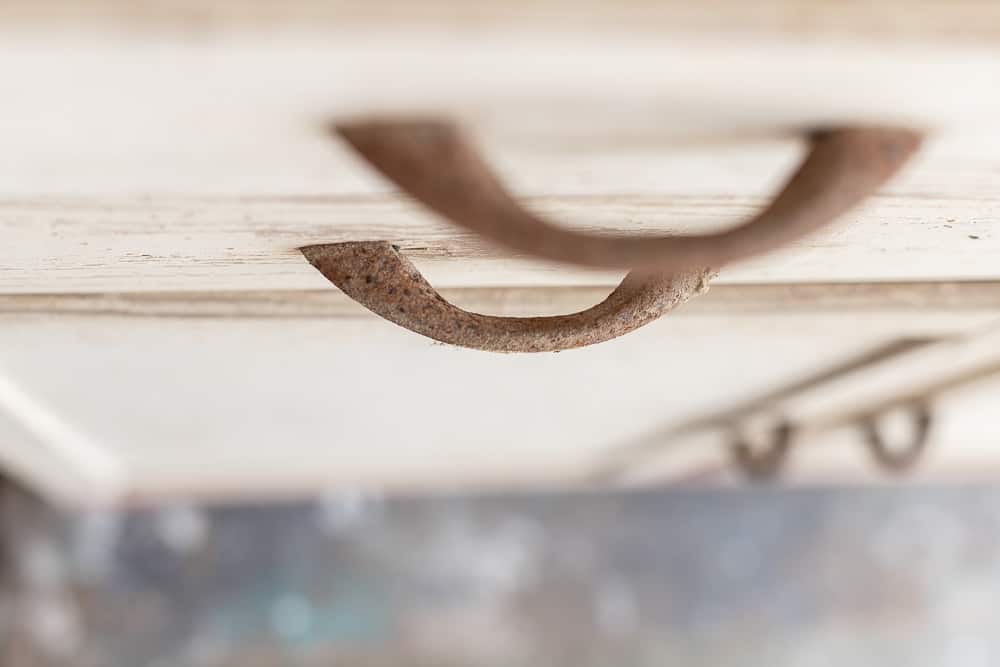
weirdly satisfying…
Maybe just a bit. I remember as a child, I visited my best friend and we spent our time scrubbing the burnt-on stains on her mom’s stainless steel pots and pans. Weirdly satisfying!
Enough of that, let’s get to work!
The first step was to remove the back board. Or maybe I should say, thick cardboard. It was not the best quality of wood and was very flimsy. Our client wanted it replaced with bead board.
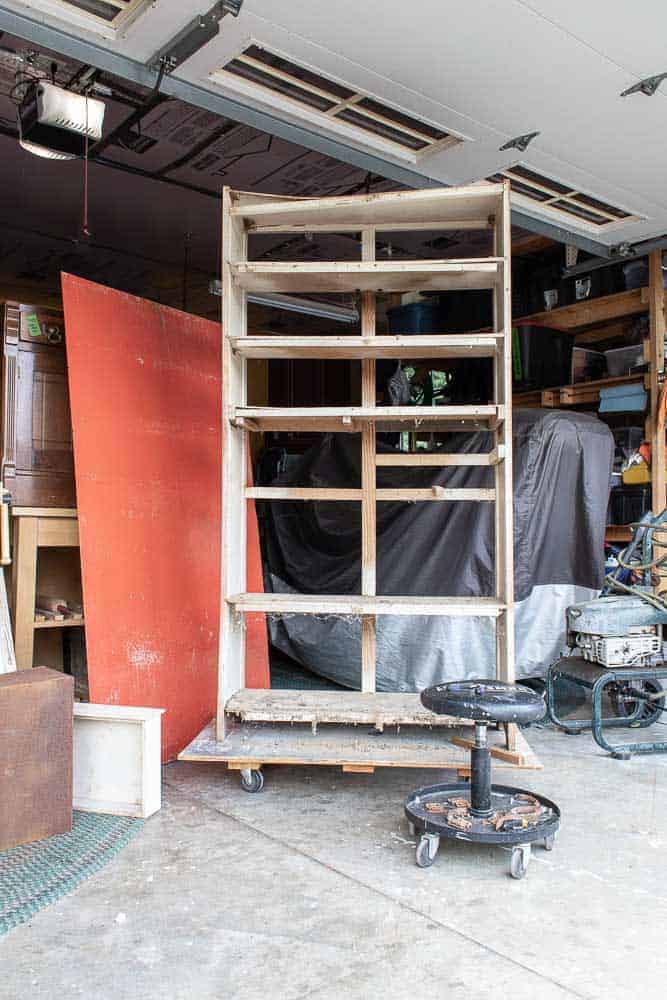
let’s get to work!
Often, I start a project with sanding using my DeWalt Orbital Sander. It really gives me an opportunity to give the piece a good once over. I physically touch every part of the piece, checking for needed repairs as I go.
I love that I get to work outside on gorgeous days like this!
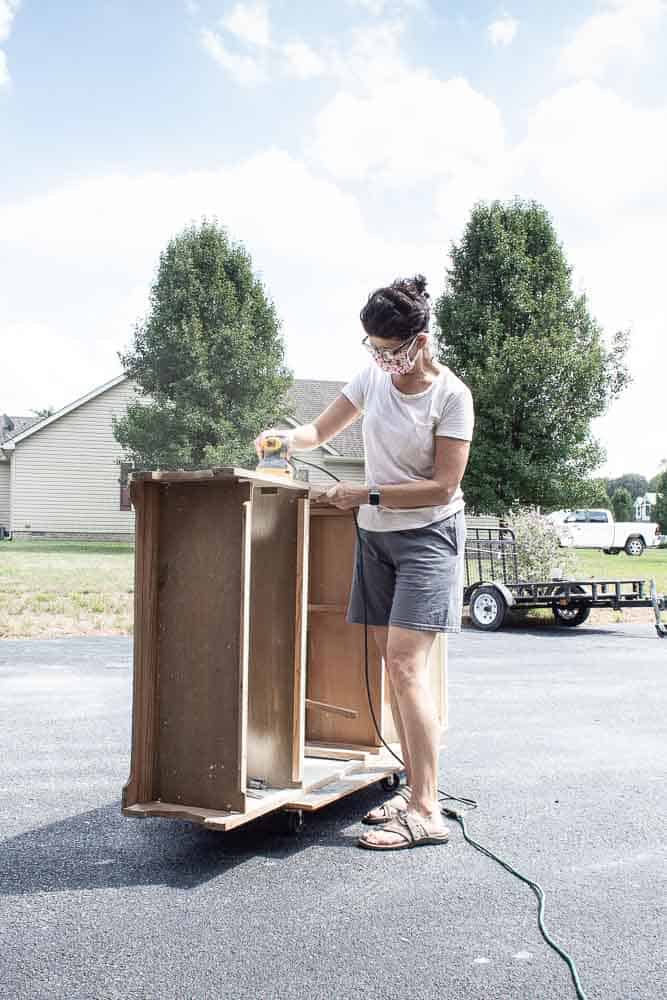
Let’s talk about those warped boards and loose shelving supports! Woohoo, now we are havin’ fun!
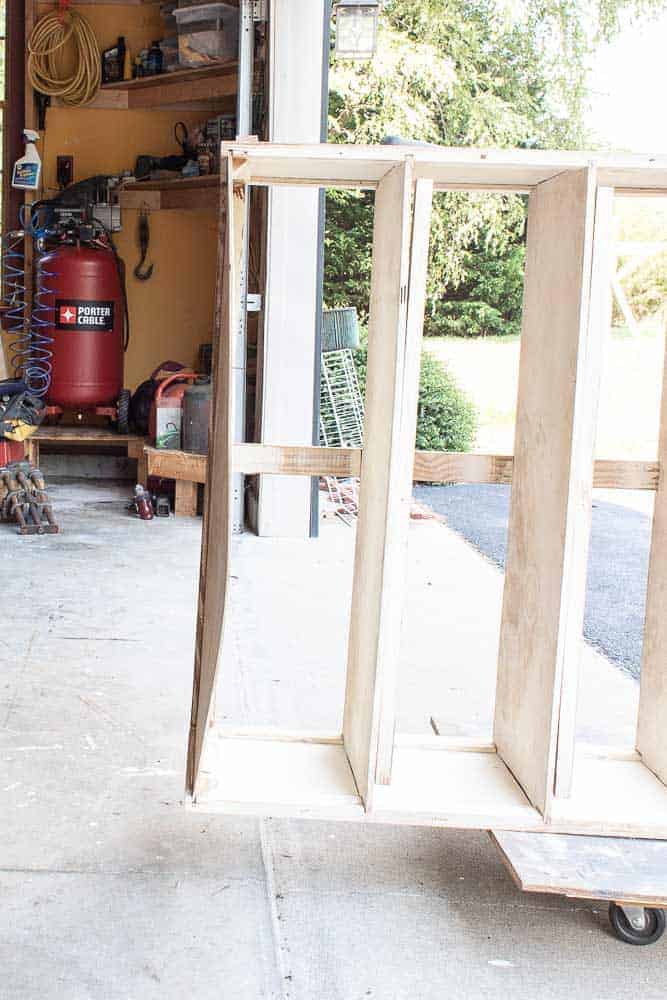
repairing warped shelves
The top was very warped. I mean, it was saaaaagging!! We all sag a bit as we age and this little lady is quite possibly close to 90 years old!
Wood screws, wood glue, and clamps help to straighten this board. I also added some wood pieces at the very top to pull some of the warp out. Unfortunately, I didn’t get pictures. I will show pictures of the finished repair in the next post so you can see better how I repaired the warp completely.
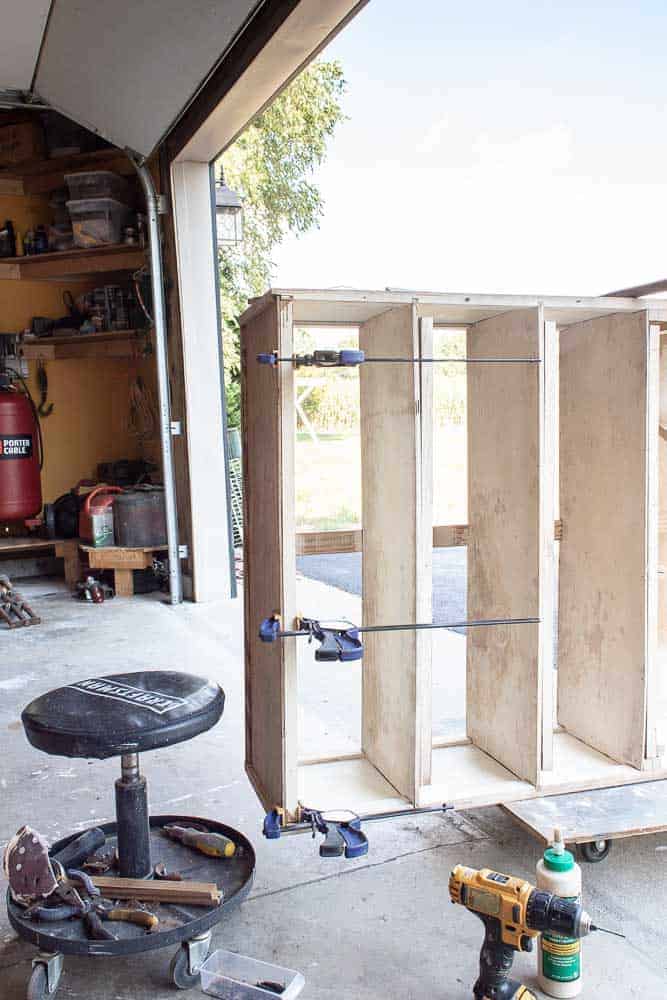
The shelving supports that are in the back of this vintage kitchen cupboard were coming apart because they were warped as well. Wood screws, wood glue, and clamps solve this problem too! Let me show you how!
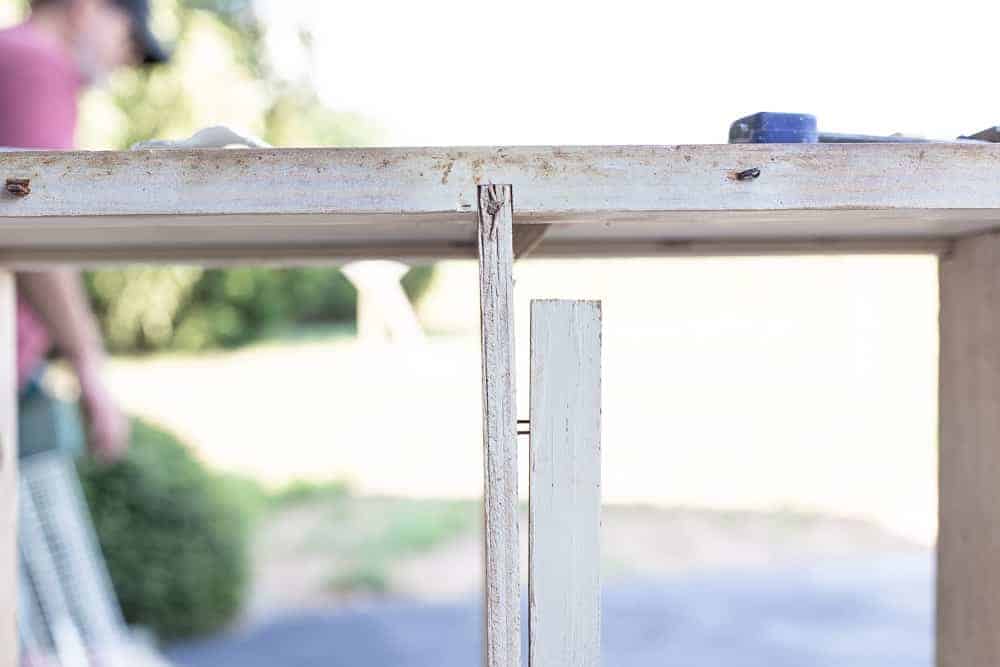
Using a small tool like an artist’s brush, apply wood glue to the exposed areas. Then, use the Irwin QuickGrip clamp to close the gap.
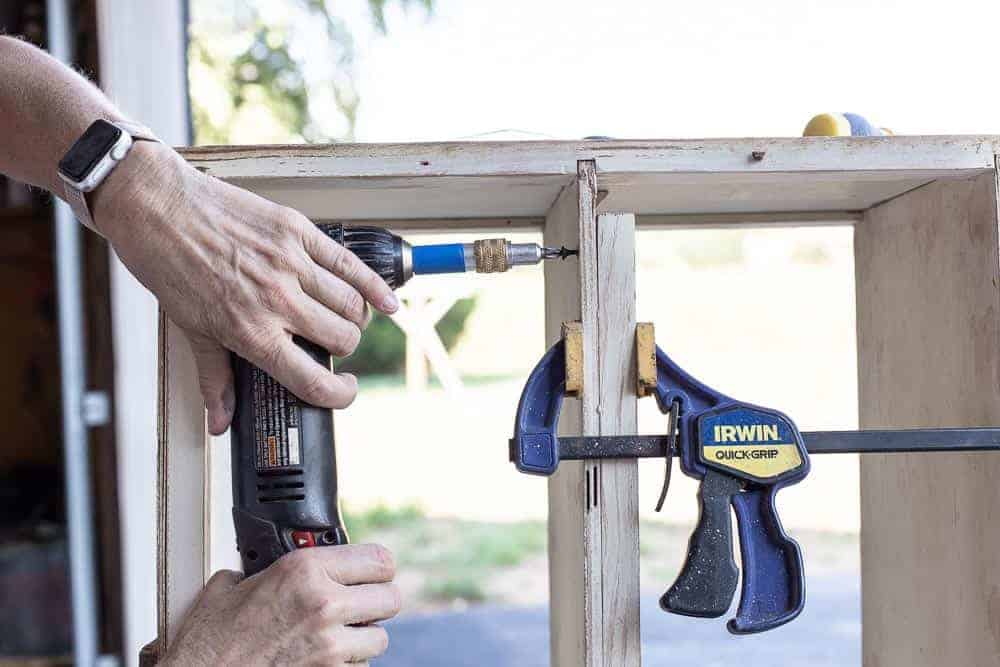
Let me mention that when you use this method to repair furniture, squeeze the clamp until there is just a bit of glue squeezed out. The screws tighten it all up too. This helps the bond to be strong.
This simple fix really straightened out the warped boards. I allowed everything to dry overnight.
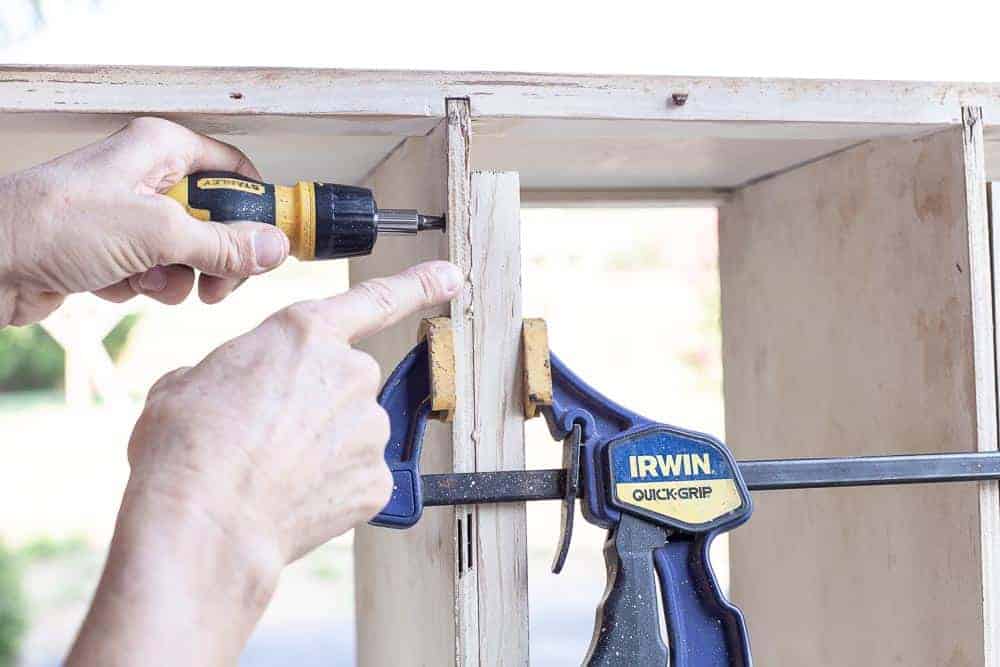
prime before painting
After allowing the glue to dry overnight, I primed it. I started the priming with General Finishes Stain Blocker. But I ran out before I was finished!
Luckily, I had Zinseer Shellac Based Primer in White on hand. The priming was finished with it.
Crazy? Yes! Patient, to order more supplies? No!
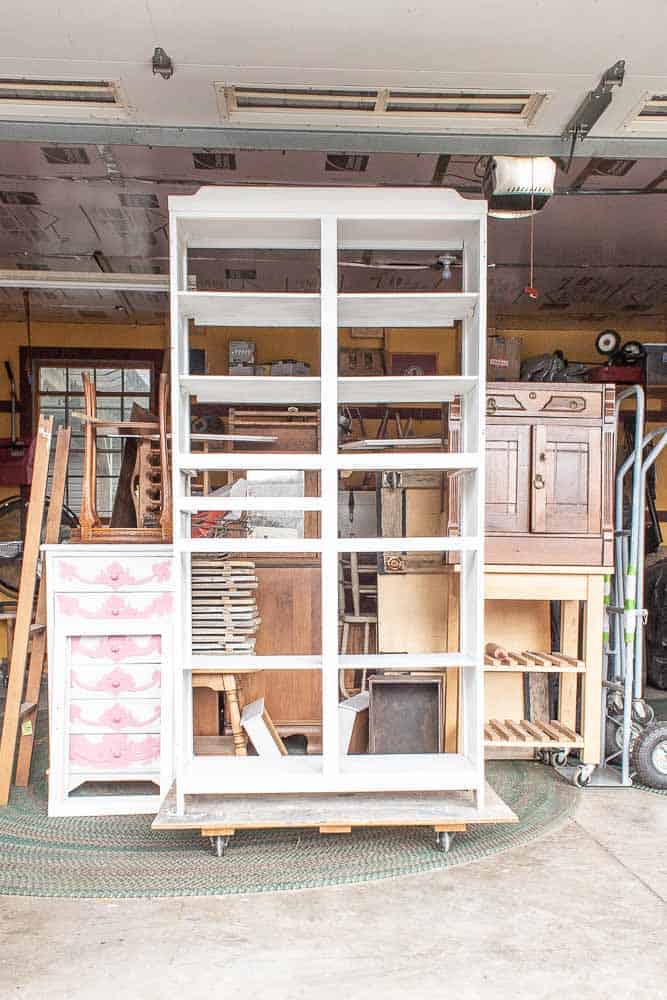
a little painting tip
Here’s a little tip when painting the underside of shelves: turn the piece on its side. Personally, it drives me crazy when you are painting the underside of something and the paint runs down and into the paintbrush handle! It takes forever to clean.
Turning the piece on its side helps with that problem! You will also notice, that I didn’t paint the bottom-most shelves. They won’t be seen when the cabinet is upright so there is no need to paint them!
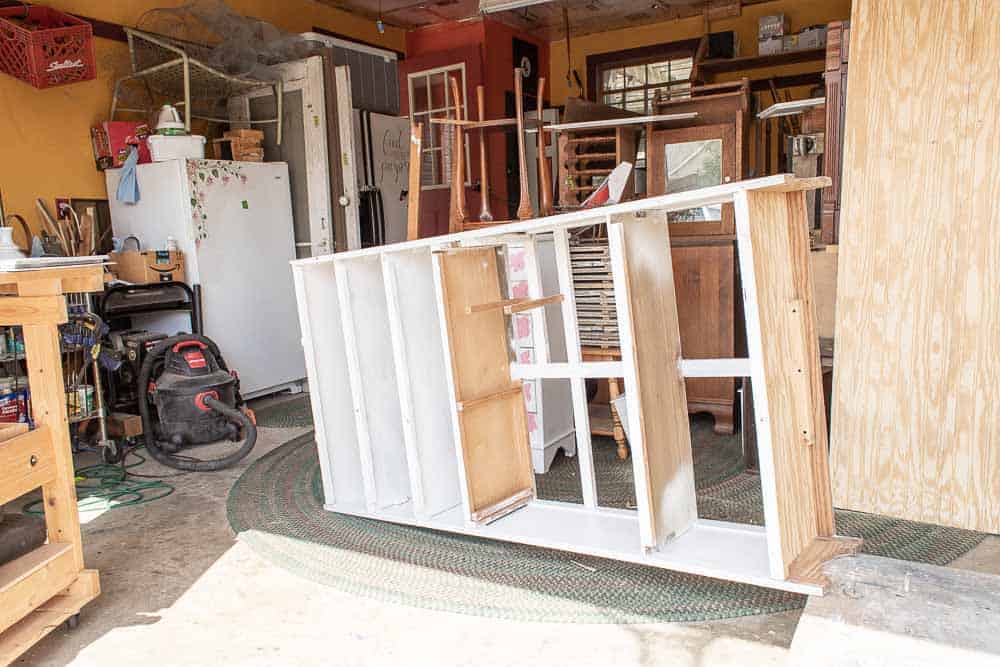
After the piece was completely primed, I mixed up Miss Mustard Seed Milk Paint in Ironstone. It is a soft white – not as stark as Farmhouse White.
I added the necessary amount of MMS Bonding Agent to the paint. The client does not want a chippy look and the Bonding Agent will prevent the paint from chipping.
By the way, these Zibra paint brushes are the best! This Palm Pro fits my arthritic hands perfectly. And they are so easy to clean!
I like to label mine to prevent any flecks of an undesirable color on a piece. For instance, if there were any leftover bits of black paint in this brush, it would have been a disaster on the light Ironstone paint!
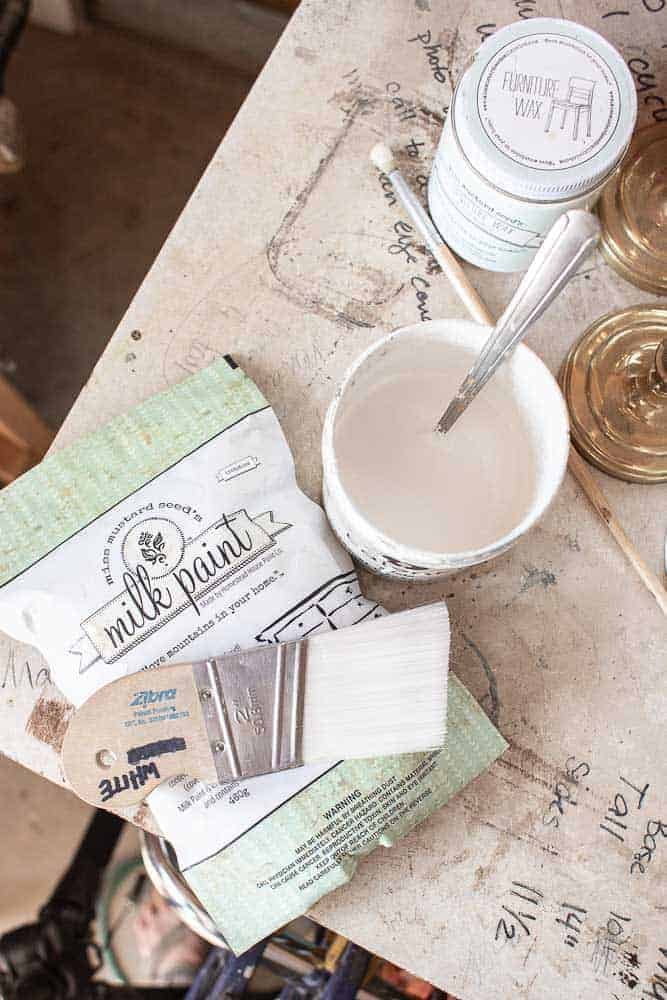
Since the cupboard was already on its side, I painted the underside of the shelves first. Two coats of paint covered the kitchen cupboard perfectly!
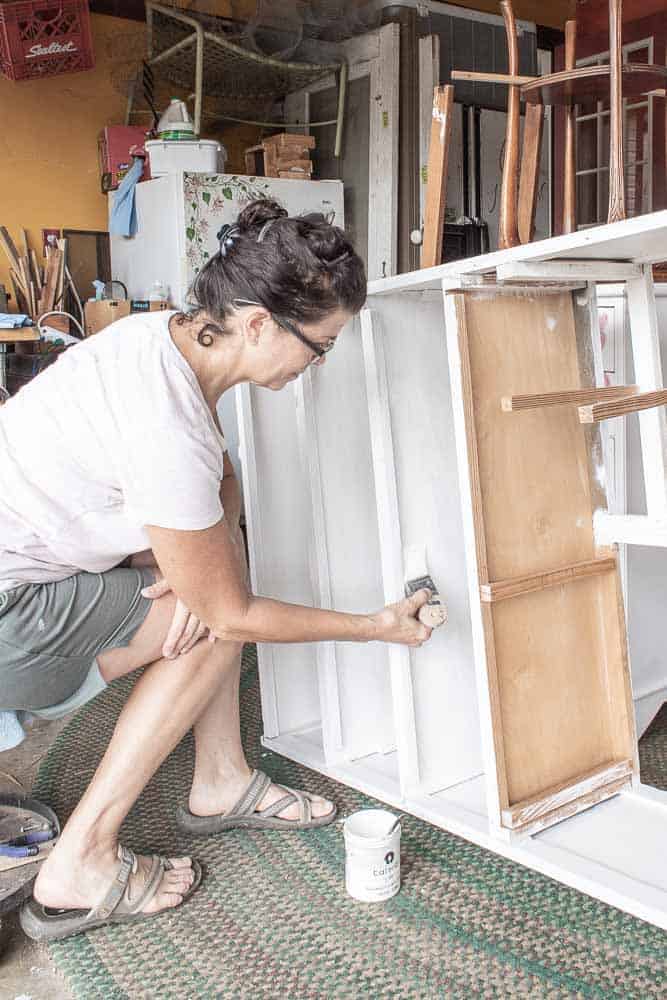
When the whole piece was painted the two coats of MMS Ironstone Milk Paint, I used a sanding block wrapped in 220 grit and gently went over the whole piece. (A 200-grit sanding block would work as well!)Doing this will smooth the surface of the milk paint and prep it for the clear coat.
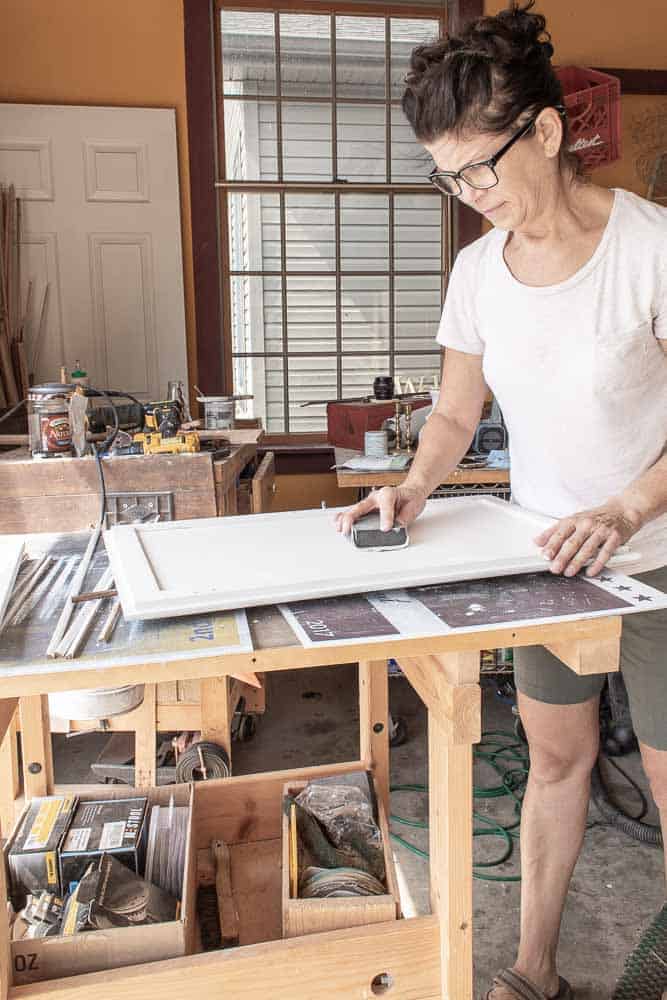
hubby’s help
Hubby cut the bead board to fit the back of the cupboard and I gave it a good sanding. The bead board can be rough and I don’t want any splinters!
After sanding, two coats of Bin Zinsser Primer in White will prep it for the paint.
Our client wanted the backboard as close to the original as possible so we chose Miss Mustard Seed Milk Paint in Tricycle. It is a gorgeous red and is very reminiscent of the red that would have been popular back in the hay day of this vintage kitchen cupboard. You see the final look in my next post!
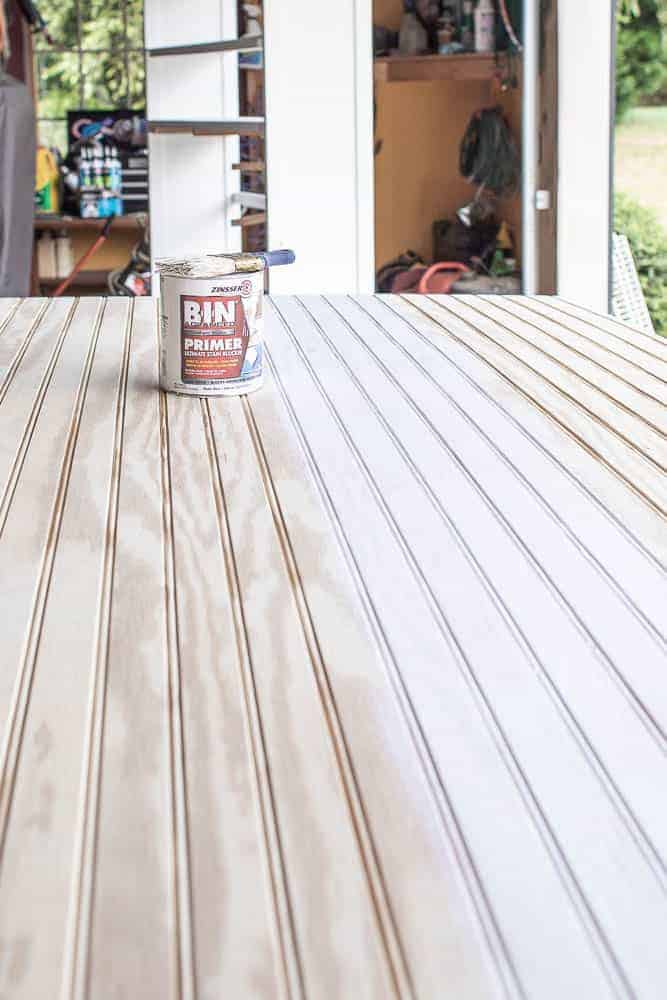
cleaning the glass
The next step is taking care of that glass. Let me just say that it is nothing short of a miracle that the glass wasn’t broken! After many years of being in the back of a barn, one would think that it should be shattered!
That is one of the reasons I wanted to use this glass. Yes, we could have tossed it and purchased new glass. But I see value in preserving the history of this piece.

Think about it – how many times did the client’s grandmom clean this exact glass? How many times did she look through the glass to see the contents on the shelves? How many times did she use its reflective qualities to check her hair when there was an unexpected knock at her door?
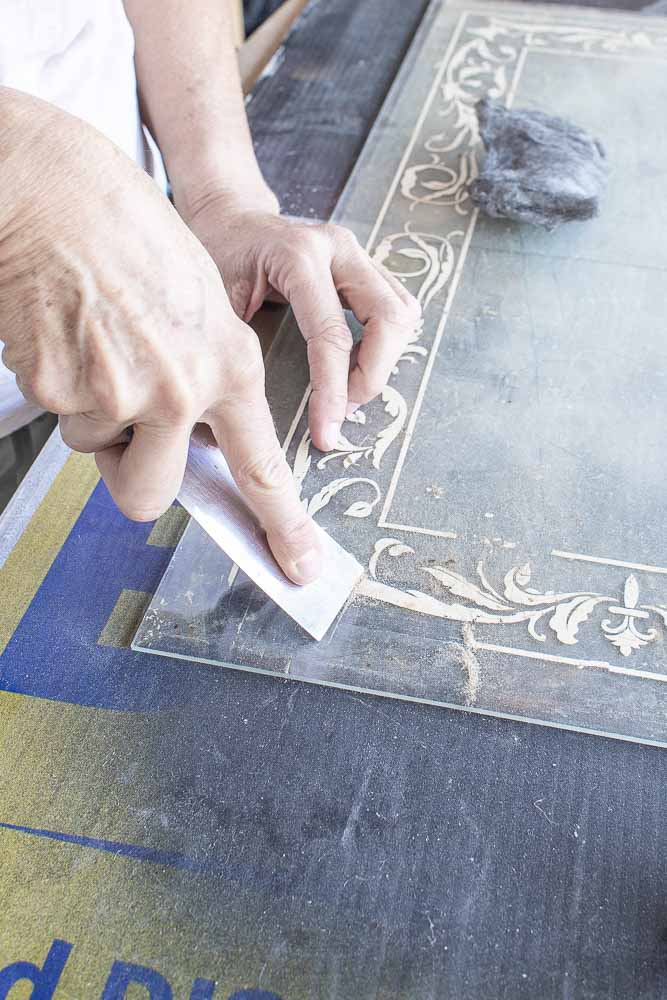
That’s why we do what we do. History is important. Vintage items are important. Stories are important.
Let’s preserve our history and the pieces that help to tell it!
Here are a couple of videos showing how I cleaned the glass. And a list of supplies:
- putty knife
- #0000 steel wool
- Windex
- lint-free cloths
- leather gloves
My preference would have been to recreate the original decal and we are still researching that option. Until then, we will stick with the cleaned glass!
stay tuned!
That’s it for today! I will share the final results soon so stay tuned!
Speaking of ‘staying tuned,’ connect with us on Instagram and Facebook for this and more reinvented projects! Sign up for our email and you can have each post sent right to your inbox!
Feel free to pin this image for future reference!


I heard your hubby did some other repairs too. Is that just a rumor?
No rumors – all truth! Hubby does alot of the repairs!!